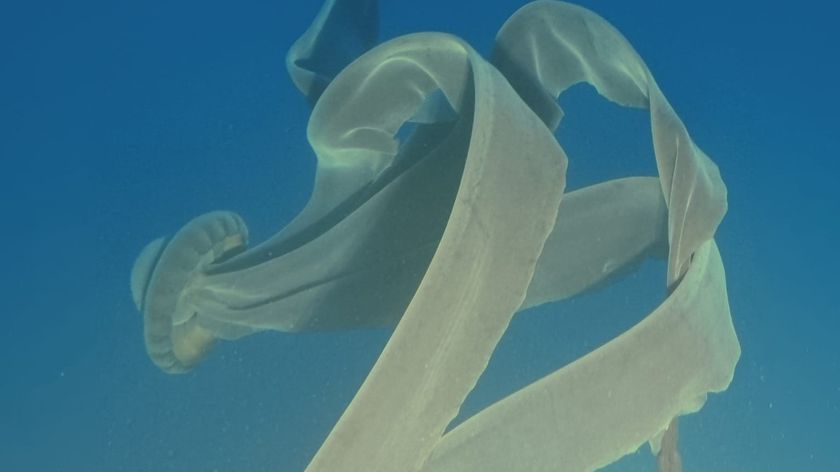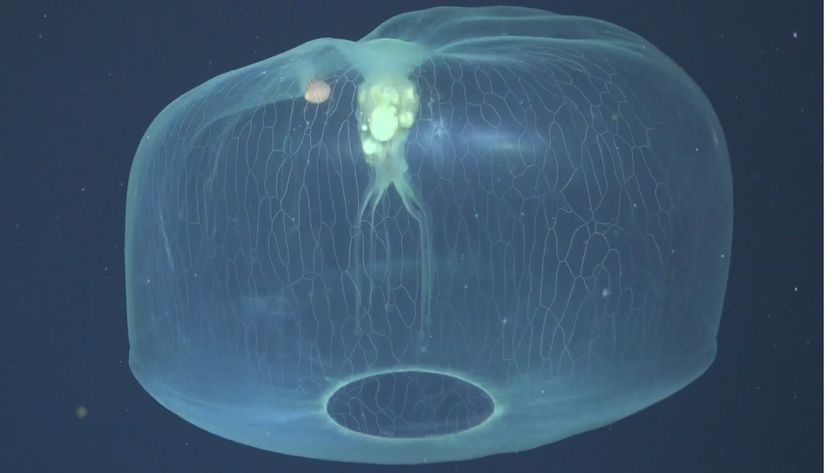Image Gallery: Jellyfish Rule!
Jellyfish Swarms
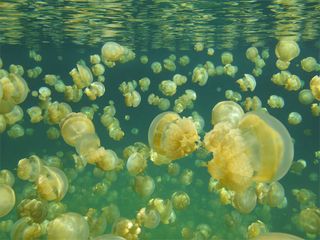
Jellyfish are simple, successful and, occasionally, deadly creatures. The Australian box jellyfish has enough toxin in each of its tentacles to kill 60 people. Some jellyfish create spectacular blooms when fields of polyps, their stationary life stage, simultaneously bud off into free-floating medusae. These blooms are blamed for the deaths of swimmers, clogged fishing nets and power plant intakes, and in certain parts of the world, like Japan, they appear to be on the rise.
But these problems are associated with only a subset of the creatures we call "jellyfish" – a catch all term for an amazingly diverse group of organisms. It includes corals, true jellies and others with stinging cells, as well as the stingless comb jellies, which swim using tiny hairs, called cilia.
What they also are is beautiful, as the following images attest.
Red Giant
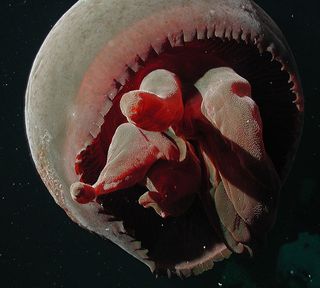
This giant red-hued jellyfish called Tiburonia granrojo was described by American and Japanese researchers in 2003. It grows up to 3.3 feet (1 meter) in diameter and lives at depths of 2,000 to 4,800 feet (650 to 1,500 meters) in the ocean. First seen during submarine dives in 1993, the jellyfish is distinct in that it uses four to seven fleshy arms to capture food, rather than fine tentacles like other jellyfish.
Haunting Eyes
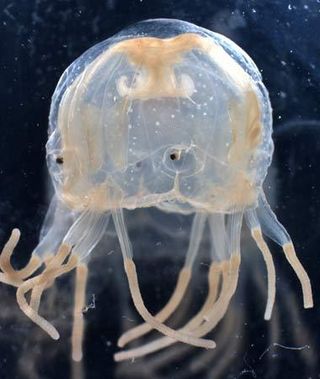
Tropical-dwelling box jellyfish have a cube-shaped body, and four different types of special-purpose eyes: The most primitive set detects only light levels, but another is more sophisticated and can detect the color and size of objects. The Australian box jellyfish is also deadly; each of its up to 60 tentacles carries enough toxin to kill 60 people.
Ocean Mixers
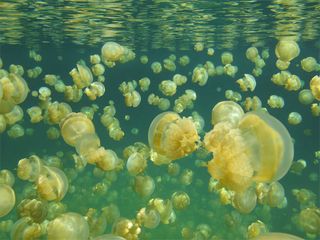
Mastigias jellyfish flood Jellyfish Lake, a marine lake in Palau, an island nation in the Pacific Ocean. Here, researchers found that pulsating jellyfish stir up the oceans with as much vigor as tides and winds, making them major players in ocean mixing.
Monster Jellyfish
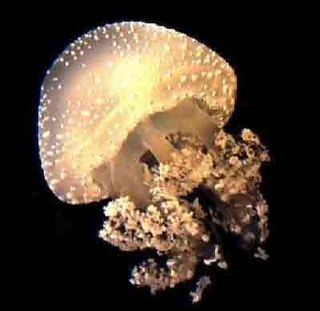
The Australian spotted jellyfish, Phyllorhiza punctata, have invaded the Gulf of Mexico. With plenty of food, they grow as big as dinner plates and weigh up to 25 pounds (11 kilograms), although in their native waters they tend to be much smaller. They are not dangerous to humans, but pose a threat to shrimping and fishing industries.
Sign up for the Live Science daily newsletter now
Get the world’s most fascinating discoveries delivered straight to your inbox.
Oldest Known Jellyfish Fossils
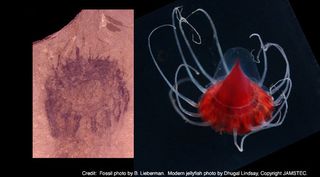
Fossil evidence of jellyfish dates back to the Cambrian Period, 500 million years ago. This fossil jellyfish shows similarity to the modern jellyfish, Cunina (right). It was one of four different types of jellyfish dated back to the Cambrian by researchers in 2007. These ancient jellyfish showed the same complexity as modern jellyfish, meaning they either developed rapidly 500 million years ago, or today’s varieties are much older.
Moon Jellyfish
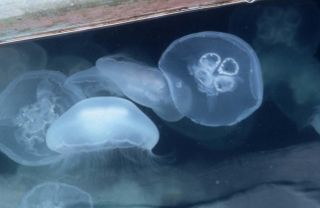
The saucer-like Aurelia aurita, or moon jellyfish is carnivorous and feeds on small plankton organisms, such as mollusks, crustaceans and even ctenophores. It can be anywhere from two to 15.7 inches (five to 40 centimeters) in diameter and is found in mostly warm and tropical waters.
Jellies from Above

The moon jellyfish is common in many parts of the world, and it appears to have increased dramatically in Japanese waters in recent decades. Seen from a bird's eye view, a bloom of moon jellyfish appears as white swaths in a Japanese bay. In Japanese waters, its blooms have interfered with fishermen and power plants.
Nomura's Jellyfish
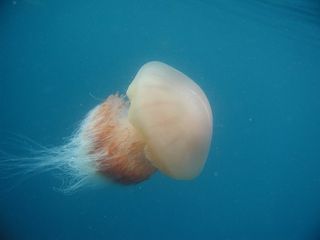
Nemopilema nomurai, known as Nomura's jellyfish, can grow up to 6.6 feet (2 meters) in diameter. It is edible, though it hasn't caught on widely. When Nomura's jellyfish bloomed in 2005, some Japanese coped by selling souvenir cookies flavored with jellyfish powder, according to the New York Times.
Jellyfish Menaces?

Blooms of Nomura's jellyfish have created serious problems in Japanese waters, including clogging fishing nets and stinging fishermen. Blooms have been recorded as far back as 1920, but they were rare events. But beginning in 2002, blooms have occurred nearly every year.
Mating Ritual
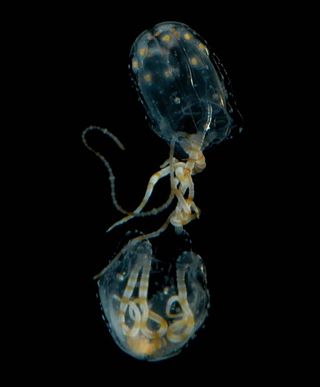
This image captures the courtship behavior of the box jellyfish Copula sivickisi. The male (top) and female (bottom) engage in a complex mating ritual unique among cnidarians (jellyfishes, hydroids, anemones, corals and their kin).

